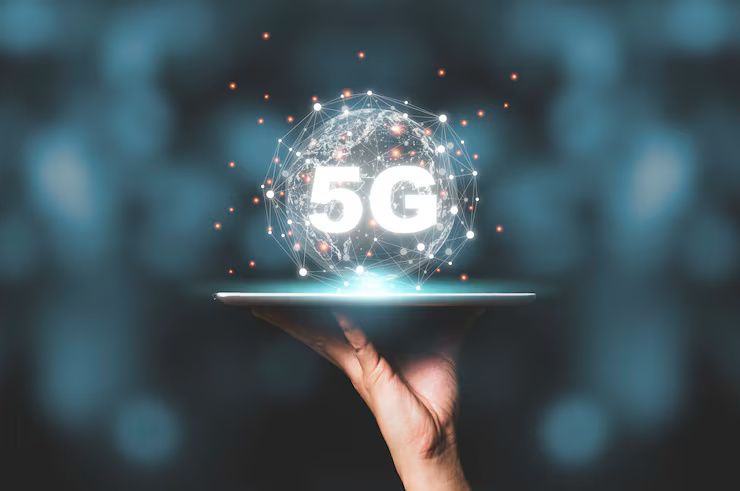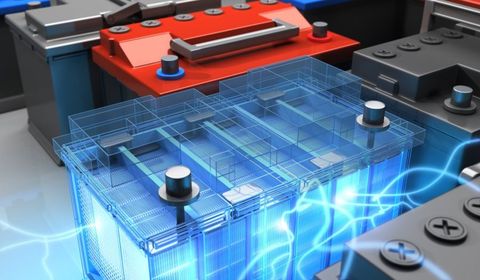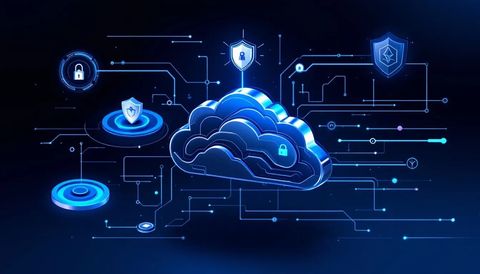Guide To The future of 5G technology and its impact
The term 5G refers to the fifth generation of mobile communication networks. It emerged because the previous generation (4G) could no longer keep pace with the growing demands for faster data, lower latency, many connected devices, and emerging applications such as augmented reality, autonomous vehicles, and massive IoT (Internet of Things).
5G networks offer higher speeds, reduced latency (delay), and support for a much greater number of connected devices compared to earlier generations. These capabilities allow new use-cases beyond simply browsing the web or streaming video.
The development of 5G involved standards bodies such as the International Telecommunication Union (ITU), the 3GPP, and numerous telecom companies, who defined the technical requirements and deployment models (e.g., Non-Standalone and Standalone).
In short, 5G exists to support a mobile and connected future where devices, machines and systems communicate in real time, often reliably and at scale.

Importance
5G matters today because it affects consumers, businesses, and society in multiple ways.
For consumers, 5G promises faster internet on smartphones, better streaming experiences, and new services such as ultra-high-definition video or augmented reality.
For businesses, 5G enables use-cases such as industrial automation, remote control of assets, logistics monitoring, and “smart” infrastructure. For instance, private 5G networks are gaining ground in manufacturing or campus environments.
For governments and urban planners, 5G supports digital infrastructure—smart cities, connected vehicles, enhanced public services, and bridging digital divides. The technology helps solve problems like network congestion, slow connectivity in rural areas, and the need for lower-latency communication for advanced applications.
A table helps summarise key benefits:
| Benefit | Who it affects | Problem addressed |
|---|---|---|
| Higher speeds & lower latency | Consumers, gamers, AR/VR users | Slow downloads, lag, limited real-time apps |
| Massive device connectivity | IoT / smart devices | Traditional networks cannot scale |
| Network slicing & private networks | Enterprises, large venues | One-size network cannot serve all uses |
| Better rural/remote coverage | Underserved regions | Digital divide, limited broadband access |
Thus, 5G is not just the next version of mobile networks—it is a foundational technology for future connectivity, digital transformation and new service models.
Recent Updates
In the past year, several important trends and developments have shaped the future of 5G technology.
-
Global 5G connections surpassed 1.5 billion by end of 2023.
-
The growth of private 5G networks (dedicated networks for a specific enterprise or location) is accelerating: according to a “Private 5G” report (Sept 2024), connections are forecast to grow at a CAGR of ~59% from 2024 to 2030, reaching over 800 million connections.
-
Security standards are being updated: in 2024, the industry saw new 5G security standards introducing advanced encryption, stronger authentication (multi-factor, biometric), and stricter IoT device requirements.
-
Deployment models are evolving towards full Standalone 5G (SA) rather than relying on 4G infrastructure (Non-Standalone). For example in early 2025 the U.S. reached median 5G SA download speeds of ~388 Mbps.
-
Standards work also continues towards the next generation (6G) even while 5G matures: ITU noted the IMT-2030 roadmap and related research.
These updates indicate that 5G is entering a new phase: from basic mobile broadband toward advanced, enterprise and industrial use-cases, with stronger security and broader global rollout.
Laws or Policies
Regulation and policy play major roles in how 5G technology is deployed and used.
In many jurisdictions, governments oversee spectrum allocation (radio frequencies), infrastructure rights of way (installation of base stations/antennas), national security and telecommunications licensing.
For example, in India: as of 31 Oct 2024, the government reported rollout of 5G services in 779 of 783 districts, with over 460,000 base transceiver stations installed.
India’s regulatory framework also includes the Telecom Regulatory Authority of India (TRAI) recommendations on infrastructure sharing, spectrum sharing and spectrum leasing (April 2024) and the Telecommunications (Telecom Cyber Security Rules) notified Nov 21 2024, applicable to 5G operators.
Globally, standards and guidelines such as IMT-2020/IMT-2030 by ITU specify technical and performance criteria.
These policies ensure fair use of spectrum, security of networks, infrastructure access, competition, and consumer protection. As 5G supports critical infrastructure and new services, regulatory oversight will remain important.
Tools and Resources
Here are some helpful tools and resources for understanding and working with 5G technology:
-
Online connectivity and rollout trackers: Publications like the GSMA Intelligence connectivity index track 5G adoption across markets.
-
Industry reports and forecasts: For example, the “Private 5G Market Report 2024–2030” (Sept 2024) provides data on IoT connections and enterprise use-cases.
-
Regulatory briefings and white papers: Documents from ITU (Backgrounders on 5G) and national regulators provide insight into spectrum, standards and deployment models.
-
Training courses and MOOCs: Courses covering 5G network architecture, security, IoT and Industry 4.0 provide foundational knowledge.
-
Technical simulation tools and lab environments: For engineers and students, network simulation software or virtual labs can model 5G system performance, slicing or core network behaviour.
-
Regulation-compliance checklists: Especially relevant for enterprises deploying private 5G or smart infrastructure, tools to assess cybersecurity, spectrum licensing, rights-of-way and architecture readiness.
FAQs
What is the difference between Non-Standalone (NSA) and Standalone (SA) 5G?
NSA 5G uses existing 4G (LTE) infrastructure for its core network with 5G radios layered on top. SA 5G uses a new 5G core network and radio access network enabling full 5G capabilities such as network slicing and ultra-low latency.
Why is 5G important for industries rather than just smartphones?
Because 5G can support massive device connections, very low latency, and high reliability, it enables use-cases like automated factories, smart logistics, remote control of equipment, and connected vehicles—areas where 4G cannot fully meet requirements.
What challenges does 5G face?
Some challenges include infrastructure costs (installing many small cells and backhaul fiber), ensuring spectrum availability, regulatory and rights-of-way issues, cybersecurity risks, and ensuring equitable coverage (bridging digital divides).
How does 5G benefit rural or underserved areas?
5G can provide fixed wireless access (FWA) as an alternative to wired broadband, allowing broadband-like speeds in rural areas without extensive fiber infrastructure. Also, special frequency bands and network architectures can help extend coverage.
What comes after 5G?
The development of 6G (IMT-2030) is already underway, with standards work identified by the ITU. 5G-Advanced (sometimes called 5.5G) is also in progress, offering enhancements like higher reliability, energy efficiency, positioning and integration with satellites or non-terrestrial networks.
Conclusion
The future of 5G technology is shaping up as more than just faster mobile internet—it is a cornerstone of digital infrastructure, enabling new services, connected machines, smarter cities and enterprise transformation. With global adoption rising (over 1.5 billion connections by end of 2023) and trends such as private 5G networks, network security enhancements and SA architectures taking hold, 5G is maturing into its next phase.
Regulatory frameworks, spectrum allocation, infrastructure readiness and cybersecurity will continue to influence how quickly and effectively 5G delivers on its promise. For individuals, businesses, and societies alike, understanding 5G’s capabilities and staying informed about its evolution is increasingly important.
As deployment accelerates and technologies evolve toward 6G, the key will be aligning innovation with reliable, secure and accessible connectivity for all.






